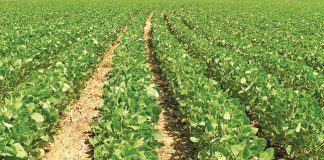
Not only is CA environmentally friendly, but it can also increase yields over time and benefits farmers by lowering production costs.
According to Johan Gouws, head of oilseeds at Rand Agri, “The renewed emphasis on sustainable and conservation agriculture reawakened the interest of grain farmers in soil health.”
Soil health
Soil is of fundamental importance in agriculture; therefore, the proper management of this valuable resource is vital to sustainable production. Soil conservation should start today and be part and parcel of any farmer’s strategies and practices.
Grain crop (plough-based) farming and conservation agriculture
“Sustainable grain farming necessitates the adoption of soil health conservation farming (CA), not merely to improve chances of being economically viable, but also to ensure the ability of this sector to address food security concerns”, highlights Gouws.
“It is important that grain farmers start implementing conservation practices, from the harvesting of crops to protect soil surfaces and prevent the loss of precious water and soil, up to the planting of new crops,” continued Gouws.
Findings published by Frontiers demonstrated improvements in soil properties under a system of CA management, in many instances leading to an increase in yield. As a result, profitability increased due to reduced costs of land preparation and labour and lower water requirements (in irrigated systems). Further savings due to reduced fertiliser use, and in some instances even reduced herbicide and insecticides use, add to the bottom line. In fact, even where yield reductions are observed, CA systems can still be more profitable than conventional agricultural systems due to reduced input costs.
Best conservation agricultural practices
“Although no definite rules apply, especially when it comes to plough-based grain farmers, a few basic conservation principles can be applied to maintain soil health,” says Gouws.
These include:
- Minimal disturbance of soil;
- Cover crops;
- Practising intercropping or crop rotation, preferably cereals followed by legumes.
Conclusion
CA is a climate-smart agricultural intensification approach resulting in greater productivity and profitability. While taking care of soil health and the environment, these regenerative principles and practices lead to sustainable and economically viable agriculture that improves the potential for food security.
For more information, visit randagri.co.za.













